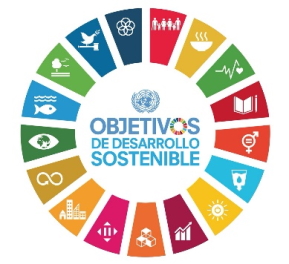|
February 2020 | Bulletin num.119 |
Subscribe
|

Counterfeits and the SDGs of the 2030 Agenda in relation to the environmentThe Sustainable Development Goals (2015-2030) are a United Nations-driven initiative that contains 17 goals and 169 goals including new areas such as climate change, economic inequality, innovation, sustainable consumption, peace, and justice, Among other priorities. At an summit held in New York at a high-level plenary meeting of the General Assembly that involved 193 member states of the UN, an Agenda was approved entitled "Transforming our world: the 2030 Agenda for Sustainable Development". 
SDGs 13, 14 and 15 are directly related because they encompass the fight against climate change. This negatively impacts the economy and all living beings. SDG 13 controls changes in weather patterns, sea level rise and extreme weather events. SDG 14 is to conserve and sustainably use the oceans, seas and marine resources for sustainable development. The life of hundreds of species depends on it. SDG 15 seeks to sustainably manage forests, fight desertification, stop and reverse land degradation and stop biodiversity loss. And what does this have to do with fakes? The escalation of counterfeiting and piracy activities and the increasing effectiveness of the customs authorities and state forces and security forces in detecting and confiscating products that violate intellectual property rights (IP) add new aspects of logistics and environment to the many problems posed by the fight against counterfeiting. The storage and disposal in an environmentally friendly manner of increasing quantities of confiscated goods constitute important logistical problems for national authorities. When eliminating confiscated products, one of the fundamental objectives is to ensure that they disappear from all commercial circuits. While this measure was initially adopted as a means of protecting private IP rights, concerns about the social and environmental impact of these products are increasingly emerging. How are counterfeit products destroyed? The intervention data of counterfeit products in 2018 in Spain are as follows: the Tax Agency intervened almost 3.3 million and the Civil Guard intervened more than 6 million. To them must be added the fakes that the police confiscate from day to day street vendors: bags, clothes, sunglasses, electronic products, cosmetics, even medicines. What happens to all those counterfeit products? What do you do with them? Legislation, both national and European, is very clear in this regard: either it is destroyed or donated for charitable purposes. And the vast majority is destroyed. For example, in the customs of the Port of Valencia there is a crushed machine that is responsible for destroying the counterfeit material seized in these facilities and then moved to a landfill or burned. Another option is to contact a waste management company, which has specialized facilities, such as a destructive plant, and that guarantees the reliability of the process of destruction of counterfeit material. However, it is being emphasized that this process is carried out under criteria of sustainability, security and confidentiality. The criteria for environmental advice are taken into account and the need to dispose of these products in a safe and environmentally friendly manner becomes increasingly evident. Shredding in the same textile machine, paper and electronics or medicines and then sending it to a landfill or an incinerator is not the most beneficial option for this. Although it is true that it is a very striking way to raise public awareness of not buying such products. In order to achieve environmentally friendly destruction, it is most convenient to leave these counterfeit products in the hands of waste management companies to recycle and recover these products, separate hazardous and non-hazardous waste and each receive the correct treatment. The alternative of offering a second life to these counterfeit products is spreading throughout many European countries. This minimizes the environmental effects that the elimination of these products entails. The option of donating counterfeit products to charities is considered very rarely. This is the case of textile products, accessories or toys, provided they comply with health and safety standards and there is no trace of the copied trademark. As the situation evolves in the field of the elimination of goods that infringe IP rights, the long-term objective is to:
The disposal of seized infringing goods in an environmentally friendly manner is becoming the priority objective of many countries. Addressing this complex problem in a timely and effective manner will help to minimize the costs and possible environmental damage caused by the accumulation of infringing goods that have to be eliminated. Source: Agencia Tributaria, Ministerio del Interior, OMPI y Agenda2030.
|
Table of contentsEvolution of national Industrial Property applications in 2019 (provisional data)Twinning between the SPTO and the Egyptian Patent Office (EGPO)Modifications of the Patent Cooperation Treaty (PCT)The impact of Brexit in the field of Industrial PropertyBlogLa Propiedad Industrial y la Primera Guerra Mundial: 100 años del Arreglo de Berna |